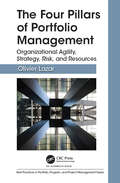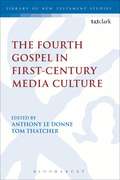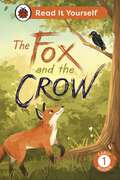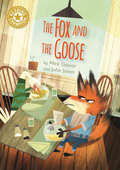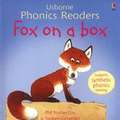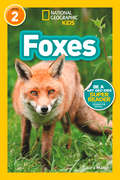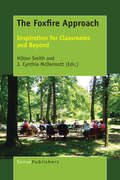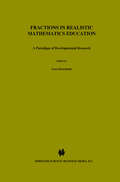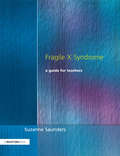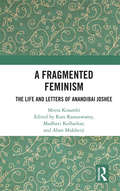- Table View
- List View
The Four Pillars of Portfolio Management: Organizational Agility, Strategy, Risk, and Resources (Best Practices in Portfolio, Program, and Project Management)
by Olivier LazarPortfolio management consists mainly of making decisions about which initiatives to undertake, which initiatives not to pursue, and which resources are to be allocated to which portfolio component. At least, that’s how it is most commonly presented in textbooks and courses. Indeed, it is all of that, but it is also so much more. Portfolio management is, of course, about making these decisions, but, more accurately, it is about making them with the goal of creating value for an organization’s wide population of stakeholders, both internal and external. This value is not only expressed in financial terms but also in social terms. The portfolio should create value for all stakeholders, who thereby support the portfolio organization and enable it to sustain itself. Portfolio management is about the realization of strategic vision, achieving a purpose, and developing an intelligent way of using resources to benefit stakeholders. This requires the ability to find a balance among the different dimensions of portfolio governance and among the constraints constantly shaping and reshaping the business environment. This is what portfolio management is truly about; this is what organizational management is about. The Four Pillars of Portfolio Management: Organizational Agility, Strategy, Risk, and Resources takes readers on a journey navigating the dimensions and constraints to be balanced and integrated as part of the portfolio and organizational decision-making process. By balancing the requirements of strategic alignment with the exposure to risk and by reconciling resource demands with capability, a portfolio manager can develop and sustain an organization despite the constant and dynamic evolution of the business environment. This book explains how to manage portfolios that create the agility all organizations require to survive and thrive.
The Fourth Gospel in First-Century Media Culture (The Library of New Testament Studies #426)
by Anthony Le Donne Tom ThatcherThis book examines the Fourth Gospel in reference to First-Century media culture, including issues of issues of orality, aurality and performance.
The Fox and the Crow: Read It Yourself - Level 1 Early Reader (Read It Yourself)
by LadybirdBased on the well-loved Aesop tale. A hungry fox is on the hunt for some food. When he spots Crow in her tree, he hatches a plan to get her cheese! What will Fox have to do to get Crow's delicious snack? The Fox and the Crow is from Early Reader Level 1 and is perfect for children aged from 4+ who are taking their first steps beyond phonics.Each book has been carefully checked by educational and subject consultants and includes comprehension puzzles, book band information, and tips for helping children with their reading.With five levels to take children from first phonics to fluent reading and a wide range of different stories and topics for every interest, Read It Yourself helps children build their confidence and begin reading for pleasure.
The Fox and the Goose: Independent Reading Gold 9 (Reading Champion #494)
by Mick GowarThis story is part of Reading Champion, a series carefully linked to book bands to encourage independent reading skills, developed with Dr Sue Bodman and Glen Franklin of UCL Institute of Education (IOE).A traditional Aesop fable is retold as the story of Fox and Goose, who try to be friends, but end up misunderstanding one another and not showing compassion for each other's needs, with disastrous consequences.Reading Champion offers independent reading books for children to practise and reinforce their developing reading skills.Fantastic, original stories are accompanied by engaging artwork and a reading activity. Each book has been carefully graded so that it can be matched to a child's reading ability, encouraging reading for pleasure.
Fox On A Box (Phonics Readers Ser.)
by Phil CoxA series of fun stories using very simple synthetic phonic-based text. Synthetic phonic learning is the process of reading by sounding the individual sounds of a word and then blending them together to read the word as a whole. With fold out flaps to make the reading experience more interactive. Written in conjunction with an educational psychology expert.
Foxes (National Geographic Readers)
by National Geographic KidsMysterious, cunning, smart, and sleek, foxes are one of kids' favourite animals. Learn all about this fantastic forest canine!
The Foxfire Approach: Inspiration for Classrooms and Beyond
by Hilton Smith J. Cynthia McDermott"This collection of essays by Foxfire practitioners represents the wide range of adaptations by educators of the pedagogical orientation of the Foxfire Magazine and Foxfire Programs for Teachers. Former students in the magazine class at Rabun County High School share the continuing impact of that experience on their lives, including a former student who is pioneering the magazine project with her sixth grade class. An early childhood teacher make a passionate, articulate case for instruction guided by the Foxfire Core Practices. And a former school administrator shares his experiences as guidance to current school administrators in enabling then supporting teachers to implement instruction guided by Foxfire’s Core Practices.Participants in Foxfire’s Program for Teachers, from early childhood teachers to college professors, describe their adaptations of the Foxfire Approach for instruction at all grade levels, all subjects and all demographics – including how they coped with the challenges they faced. One practitioner describes how she used the Core Practices to design instruction in rural China. We have an engaging essay focused on our summer courses for teachers, based on extensive observations and interview of participants attending those courses.Several essays explore the pedagogical roots of the Foxfire Approach, as well as its value in providing instruction today which engages the students in the content and results in durable learning.Readers can read straight through the book, beginning with a short historical introductory essay, or skip around to topics of interest to assemble an informed assessment of the potential of the Foxfire Approach."
Fractions 3
by Schofield Sims Hilary Koll Steve MillsSchofield & Sims Fractions, Decimals and Percentages is a comprehensive programme that supports a mastery approach to teaching and learning this tricky area of maths. Comprising six pupil books and six accompanying teacher's guides, this structured series helps children to develop a deep, secure and adaptable understanding of fractions, building up to decimals, percentages, ratio and proportion. Each pupil book contains varied activities, suitable for use either in class or at home, that directly correspond to the lessons provided in the supporting teacher's guide. Each unit is set across a double-page spread containing a summary of the key learning point, followed by targeted practice questions, ranging from simple 'Get started' questions that help children gain confidence to more complex 'Now you try' and 'Challenge' questions that develop conceptual understanding and mathematical reasoning skills. Regular 'Check-up tests' and a 'Final test' reinforce learning and help to identify strengths and weaknesses. Additional features provided at the back of the book include a self-evaluation checklist to encourage children to assess their own learning and a glossary to support the confident use of mathematical vocabulary. Fractions, Decimals and Percentages Book 3 supports the National Curriculum requirements for Year 3 and covers the following topic areas: using unit and non-unit fractions; comparing and ordering fractions with the same denominator; finding equivalent fractions using a fraction wall; counting in tenths; adding and subtracting fractions with the same denominator; and problem solving. A separate accompanying teacher's guide, Fractions, Decimals and Percentages Book 3 Teacher's Guide (ISBN 9780721713809), contains lesson plans, answers to all the questions in the pupil book, and assessment and record-keeping resources. A selection of free downloads is also available from the Schofield & Sims website.
Fractions 4
by Schofield Sims Hilary Koll Steve MillsSchofield & Sims Fractions, Decimals and Percentages is a comprehensive programme that supports a mastery approach to teaching and learning this tricky area of maths. Comprising six pupil books and six accompanying teacher's guides, this structured series helps children to develop a deep, secure and adaptable understanding of fractions, building up to decimals, percentages, ratio and proportion. Each pupil book contains varied activities, suitable for use either in class or at home, that directly correspond to the lessons provided in the supporting teacher's guide. Each unit is set across a double-page spread containing a summary of the key learning point, followed by targeted practice questions, ranging from simple 'Get started' questions that help children gain confidence to more complex 'Now you try' and 'Challenge' questions that develop conceptual understanding and mathematical reasoning skills. Regular 'Check-up tests' and a 'Final test' reinforce learning and help to identify strengths and weaknesses.Additional features provided at the back of the book include a self-evaluation checklist to encourage children to assess their own learning and a glossary to support the confident use of mathematical vocabulary. Fractions, Decimals and Percentages Book 4 supports the National Curriculum requirements for Year 4 and covers the following topic areas: recognising families of equivalent fractions; adding and subtracting fractions with the same denominator; counting in hundredths; recognising simple decimal fraction equivalents; dividing one- and two-digit numbers by ten and one hundred; rounding decimals to the nearest whole number; comparing decimals up to two decimal places; and problem solving. A separate accompanying teacher's guide, Fractions, Decimals and Percentages Book 4 Teacher's Guide (ISBN 9780721713823), contains lesson plans, answers to all the questions in the pupil book, and assessment and record-keeping resources. A selection of free downloads is also available from the Schofield & Sims website.
Fractions Flashcards 5+ (Collins Easy Learning KS1)
by Collins Easy LearningHelp your child to learn and practise fractions taught at school. These educational flashcards are a fun and easy way to help build confidence with fractions at home.
Fractions in Realistic Mathematics Education: A Paradigm of Developmental Research (Mathematics Education Library #8)
by Leen StreeflandFractions, Ratios, and Roots: Rediscover the Basics and Learn About Interesting Applications (essentials)
by Renate MotzerRenate Motzer introduces the world of fractions and connects them with decimal numbers. She clearly shows that fractions can be understood as parts of a whole, but also as ratios of two quantities. The author clearly shows why roots cannot be exactly indicated by fractions, how to find good approximations and why an unusual addition of fractions can lead to paradoxical results. Furthermore, she explains the use of fractions in percentage and probability calculations in a practical way and finally discusses different ways of forming mean values.This Springer essential is a translation of the original German 1st edition essentials, Brüche, Verhältnisse und Wurzeln by Renate Motzer, published by Springer Fachmedien Wiesbaden GmbH, part of Springer Nature in 2018. The translation was done with the help of artificial intelligence (machine translation by the service DeepL.com). A subsequent human revision was done primarily in terms of content, so that the book will read stylistically differently from a conventional translation. Springer Nature works continuously to further the development of tools for the production of books and on the related technologies to support the authors.
The Fractured Marketplace for Standardized Testing (Evaluation in Education and Human Services #34)
by Walter M. Haney George F. Madaus Robert LyonsStandardized testing in the United States has been increasing at a rapid pace in the last twenty-five years. The market for tests has not only been expanding rapidly, but has also been changing sharply in structure into a fractured marketplace. Indeed, one of the main features of this book is that the market for standardized testing is highly fractured - with segments of the market facing monopoly conditions, others facing oligopoly conditions and still others where near free-market conditions exist. One of the main premises of the book is that the structures of markets have strong implications for how those markets perform. While this notion is widely accepted among economists, it is not widely appreciated in educational research. A second motivation for the book is that very little scholarly attention has been focused on the standardized testing industry. This topic - the structure of the testing industry and implications for the quality of tests and test use - affects how we evaluate the learning of students, the effectiveness of teaching, the quality of schools and the educational health of the nation. Of particular concern to the authors is one vital aspect of test quality: test validity. This book is the most current and authoritative review and analysis of the market for standardized testing.
A Fractured Profession: Commercialism and Conflict in Academic Science (Critical University Studies)
by David R. JohnsonThe commercialization of research is one of the most significant contemporary features of US higher education, yet we know surprisingly little about how scientists perceive and experience commercial rewards. A Fractured Profession is the first book to systematically examine the implications of commercialization for both universities and faculty members from the perspective of academic scientists. Drawing on richly detailed interviews with sixty-one scientists at four universities across the United States, sociologist David R. Johnson explores how an ideology of commercialism produces intraprofessional conflict in academia.The words of scientists themselves reveal competing constructions of status, conflicting norms, and divergent career paths and professional identities. Commercialist scientists embrace a professional ideology that emphasizes the creation of technologies that control societal uncertainties and advancing knowledge toward particular;¢;‚¬;€?and financial;¢;‚¬;€?ends. Traditionalist scientists, on the other hand, often find themselves embattled and threatened by university and federal emphasis on commercialization. They are less concerned about issues such as conflicts of interest and corruption than they are about unequal rewards, unequal conditions of work, and conflicts of commitment to university roles and basic science.Arguing that the division between commercialists and traditionalists represents a new form of inequality in the academic profession, this book offers an incisive look into the changing conditions of work in an era of academic capitalism. Focusing on how the profit motive is reshaping higher education and redefining what faculty are supposed to do, this book will appeal to scientists and academics, higher education scholars, university administrators and policy makers, and students considering a career in science.
A Fractured Profession: Commercialism and Conflict in Academic Science (Critical University Studies)
by David R. JohnsonThe commercialization of research is one of the most significant contemporary features of US higher education, yet we know surprisingly little about how scientists perceive and experience commercial rewards. A Fractured Profession is the first book to systematically examine the implications of commercialization for both universities and faculty members from the perspective of academic scientists. Drawing on richly detailed interviews with sixty-one scientists at four universities across the United States, sociologist David R. Johnson explores how an ideology of commercialism produces intraprofessional conflict in academia.The words of scientists themselves reveal competing constructions of status, conflicting norms, and divergent career paths and professional identities. Commercialist scientists embrace a professional ideology that emphasizes the creation of technologies that control societal uncertainties and advancing knowledge toward particular;¢;‚¬;€?and financial;¢;‚¬;€?ends. Traditionalist scientists, on the other hand, often find themselves embattled and threatened by university and federal emphasis on commercialization. They are less concerned about issues such as conflicts of interest and corruption than they are about unequal rewards, unequal conditions of work, and conflicts of commitment to university roles and basic science.Arguing that the division between commercialists and traditionalists represents a new form of inequality in the academic profession, this book offers an incisive look into the changing conditions of work in an era of academic capitalism. Focusing on how the profit motive is reshaping higher education and redefining what faculty are supposed to do, this book will appeal to scientists and academics, higher education scholars, university administrators and policy makers, and students considering a career in science.
Fragestrategien als Führungsinstrument in der Familienmediation (essentials)
by Thomas SpörerFragestrategien haben für die Gesprächsführung in Mediationsverfahren inhaltlich und führungstechnisch eine zentrale Funktion. Dennoch spielen sie in den meisten Ausbildungsgängen zum Mediator/zur Mediatorin keine hervorgehobene Rolle. Dieser Band thematisiert u.a. eine beobachtbare allgemeine Unsicherheit bei Mediatoren bezüglich der systematischen Anwendung und Gestaltung von Fragestrategien.Er erläutert dabei exemplarisch anhand eines idealtypischen Mediationsverlaufs für Paare Schritt für Schritt die fragegestützte Gestaltung und Entwicklung solcher Einigungsprozesse und unterstreicht den damit entstehenden Nutzen eines solchen Weges nicht nur für die Betroffenen, sondern auch für die Mediatoren selbst.
Fragile X Syndrome: A Guide for Teachers
by Suzanne SaundersFragile X Syndrome is thought to be the most common inherited cause of learning difficulties. However many people have never heard of it and those who have, including many of the professionals who work with those affected by it, have little knowledge or understanding of the condition. This book brings up to date research with information and advice from teachers who are discovering, first hand, the best ways of educating children with Fragile X. It is much needed support and advice that will help teachers to understand the child with Fragile X and encourage maximum educational progress. / While the book is aimed at teachers, it is also an excellent resource for parents, therapists and any professional working with a child who has Fragile X.
Fragile X Syndrome: A Guide for Teachers
by Suzanne SaundersFragile X Syndrome is thought to be the most common inherited cause of learning difficulties. However many people have never heard of it and those who have, including many of the professionals who work with those affected by it, have little knowledge or understanding of the condition. This book brings up to date research with information and advice from teachers who are discovering, first hand, the best ways of educating children with Fragile X. It is much needed support and advice that will help teachers to understand the child with Fragile X and encourage maximum educational progress. / While the book is aimed at teachers, it is also an excellent resource for parents, therapists and any professional working with a child who has Fragile X.
Fragmentation of the Photographic Image in the Digital Age (Routledge History of Photography)
by Daniel RubinsteinFragmentation of the Photographic Image in the Digital Age challenges orthodoxies of photographic theory and practice. Beyond understanding the image as a static representation of reality, it shows photography as a linchpin of dynamic developments in augmented intelligence, neuroscience, critical theory, and cybernetic cultures. Through essays by leading philosophers, political theorists, software artists, media researchers, curators, and experimental programmers, photography emerges not as a mimetic or a recording device but simultaneously as a new type of critical discipline and a new art form that stands at the crossroads of visual art, contemporary philosophy, and digital technologies.
Fragmentation of the Photographic Image in the Digital Age (Routledge History of Photography)
by Daniel RubinsteinFragmentation of the Photographic Image in the Digital Age challenges orthodoxies of photographic theory and practice. Beyond understanding the image as a static representation of reality, it shows photography as a linchpin of dynamic developments in augmented intelligence, neuroscience, critical theory, and cybernetic cultures. Through essays by leading philosophers, political theorists, software artists, media researchers, curators, and experimental programmers, photography emerges not as a mimetic or a recording device but simultaneously as a new type of critical discipline and a new art form that stands at the crossroads of visual art, contemporary philosophy, and digital technologies.
A Fragmented Feminism: The Life and Letters of Anandibai Joshee
by Meera Kosambi"This book is a search for ‘the real Anandibai Joshee’ —— a search in which the readers are invited to participate." In her short and eventful life, Anandibai Joshee, the first Indian woman to earn a medical degree, broke many stereotypes. Literate at a time when it was taboo for a girl to attend school or even ‘pick up a paper’, she was courageous, articulate, and assertive. And ambitious. Fuelled by a desire to improve the healthcare that was available to Indian women at that time, she travelled across the seas to the United States to study medicine. Meera Kosambi’s biography of Anandibai is more than just a retelling of the life of a woman who was ahead of her times. Drawing on a host of narratives, Kosambi recovers Anandibai’s many voices, which have been submerged in history — that of a conflicted feminist, a nationalist, and a reformer, among others — and her engagement with the world at large. This volume is a testament to Meera Kosambi’s commitment to social history. When she passed away in 2015, she left an incomplete manuscript that has painstakingly been put together by the editors. Drawing on archival research, including a host of Anandibai’s letters, her poems in Marathi, newspaper reports, and rare photographs, this book will be of immense interest to scholars and researchers of modern Indian history, sociology, gender, and South Asian studies.
A Fragmented Feminism: The Life and Letters of Anandibai Joshee
by Meera Kosambi"This book is a search for ‘the real Anandibai Joshee’ —— a search in which the readers are invited to participate." In her short and eventful life, Anandibai Joshee, the first Indian woman to earn a medical degree, broke many stereotypes. Literate at a time when it was taboo for a girl to attend school or even ‘pick up a paper’, she was courageous, articulate, and assertive. And ambitious. Fuelled by a desire to improve the healthcare that was available to Indian women at that time, she travelled across the seas to the United States to study medicine. Meera Kosambi’s biography of Anandibai is more than just a retelling of the life of a woman who was ahead of her times. Drawing on a host of narratives, Kosambi recovers Anandibai’s many voices, which have been submerged in history — that of a conflicted feminist, a nationalist, and a reformer, among others — and her engagement with the world at large. This volume is a testament to Meera Kosambi’s commitment to social history. When she passed away in 2015, she left an incomplete manuscript that has painstakingly been put together by the editors. Drawing on archival research, including a host of Anandibai’s letters, her poems in Marathi, newspaper reports, and rare photographs, this book will be of immense interest to scholars and researchers of modern Indian history, sociology, gender, and South Asian studies.
Fragmented Women: Feminist (Sub)versions of Biblical Narratives (T&T Clark Cornerstones)
by J. Cheryl ExumIn the biblical narratives, women are usually minor characters in the stories of men. Fragments of women's stories must be gleaned from the more cohesive stories of their fathers, husbands and sons. Fragmented Women begins with the premise that, to recover shards of women's stories from androcentric texts like the Bible, it is necessary to step outside the ideology of the text, subverting the patriarchal perspective that has focused attention on the male characters. In this classic work, J. Cheryl Exum draws on feminist literary theory to critique the dominant male voice of the biblical narrative and to construct (sub)versions of women's stories from the submerged strains of their voices in men's stories. For this Cornerstones edition Exum has provided a reflective introduction on the book's impact, and upon how the field has changed since it was published.
Fragmented Women: Feminist (Sub)versions of Biblical Narratives (T&T Clark Cornerstones #Vol. 163)
by J. Cheryl ExumIn the biblical narratives, women are usually minor characters in the stories of men. Fragments of women's stories must be gleaned from the more cohesive stories of their fathers, husbands and sons. Fragmented Women begins with the premise that, to recover shards of women's stories from androcentric texts like the Bible, it is necessary to step outside the ideology of the text, subverting the patriarchal perspective that has focused attention on the male characters. In this classic work, J. Cheryl Exum draws on feminist literary theory to critique the dominant male voice of the biblical narrative and to construct (sub)versions of women's stories from the submerged strains of their voices in men's stories. For this Cornerstones edition Exum has provided a reflective introduction on the book's impact, and upon how the field has changed since it was published.
Fragwürdige Fragebögen: Paradigmatische Untersuchungen zur Gewalt in der Schule
by Florian Heinrich Ernst PlaumDas Thema "Gewalt an Schulen" hat im deutschen Sprachraum Konjunktur. Besonders kontrovers wird in diesem Zusammenhang die Debatte geführt, ob bei der Gewalt unter Jugendlichen eine Zunahme zu verzeichnen ist. Empirische Studien liefern zu dieser Frage regelmäßig widersprüchliche Ergebnisse, was auf die erheblichen methodischen Probleme zurückzuführen ist, die sich in diesem Kontext stellen. Die beliebte Fragebogenmethode - so vermutet man - ist insbesondere beim heiklen Thema Gewalt und Aggression durch zahlreiche Verfälschungseffekte verzerrt. Die in diesem Buch beschriebene Hauptuntersuchung wendet einen Metafragebogen und qualitative Interviews an, um das Ausmaß zu bestimmen, in dem Schülerinnen und Schüler bei Fragen zur Gewalt an der Schule falsche Angaben machen. Darüber hinaus werden Überlegungen angeregt, ob sich entsprechende Probleme möglicherweise auch auf anderen Gebieten ergeben.
